Backed by the Sahara Desert and the towering Atlas Mountains, Marrakech is a city paused in time. A feast for the senses, prepare for an atmosphere unlike any other. Within the red city walls is Marrakech’s famous medina. Here you’ll find a rush of sounds, floating aromas and vibrant colors where snake charmers hover and traditional riads provide a quiet escape.
As you explore, you’ll discover the city which flourished under two imperial dynasties, creating enchanting architecture that has stood the test of time. Explore ancient tombs, royal palaces and manicured gardens.
As a gateway to the Sahara Desert and the imposing Atlas Mountains, Marrakech provides both a pulsating culture and imitable nature. Continue on to discover the best things to do in Marrakech.
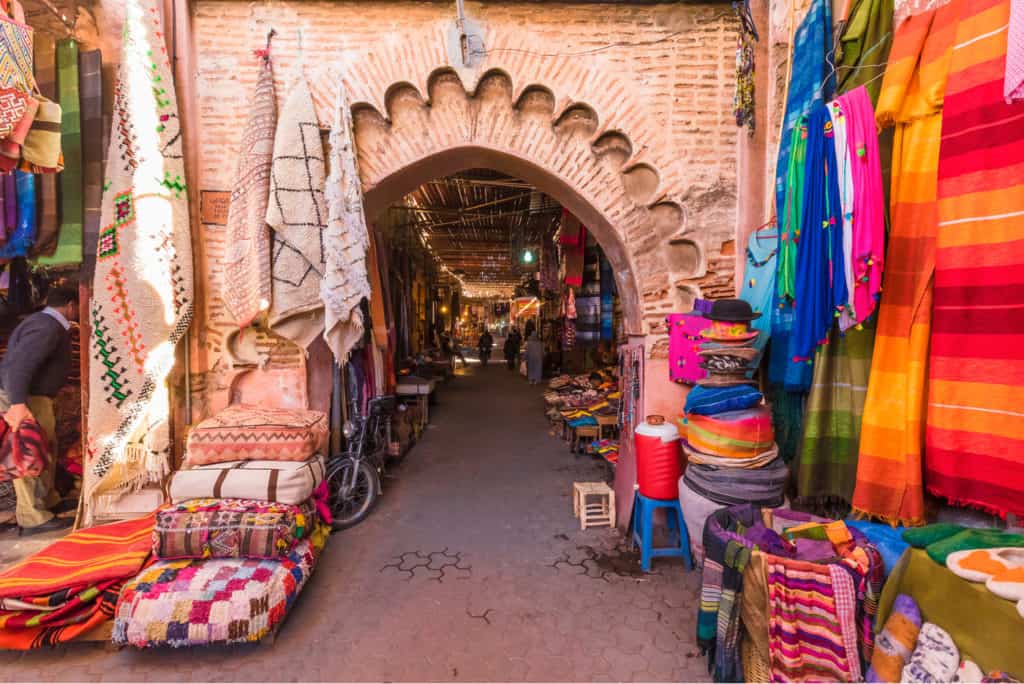
Get Lost in the Medina
In Marrakech’s Old Town, the medina is a journey into the past. The narrow walkways, centuries old, are a sensory experience and a kaleidoscope of colors, aromas and action. The maze-like layout can make it almost impossible to not get lost. For many travelers this the exact intention, with the hope they can stumble upon a hole-in-the-wall cafe for local coffee or a unique shop they would find nowhere else.
As you roam, you’ll pass many of the best attractions on this list, including the UNESCO Djemaa El Fna and the Koutoubia Mosque. But sometimes it’s the little things that blow you away the most. Aspects far removed from your regular life and experiences, which make travel mean so much.
The action in the medina moves quick. Dodge carts transporting anything from fresh produce to decor and see an entrancing mix of African, Middle Eastern and European culture. All woven into one delightful fabric.
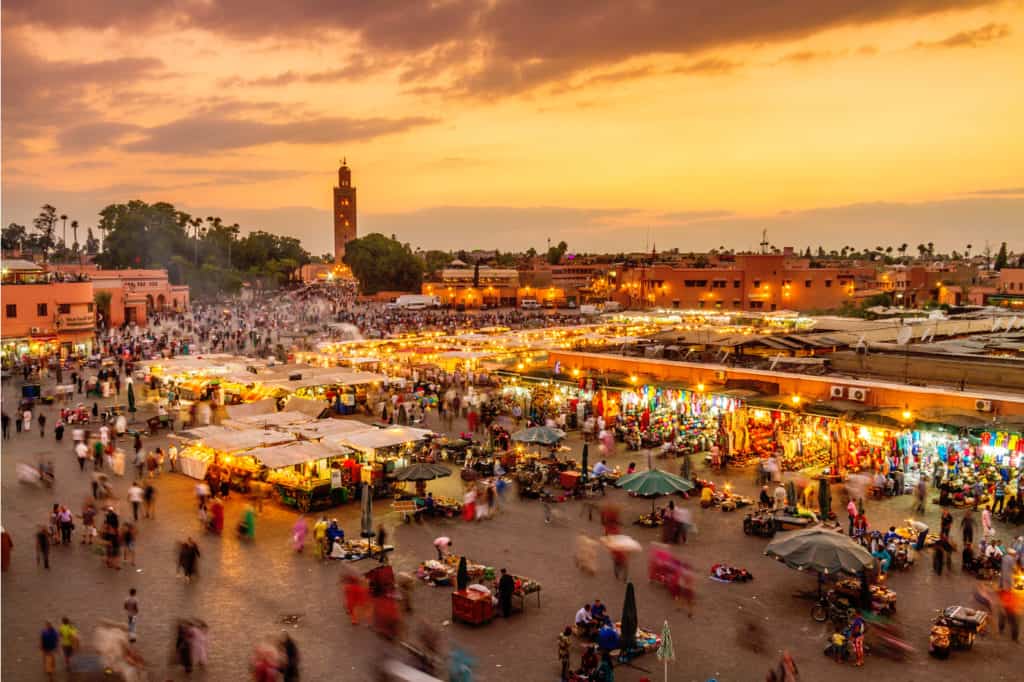
Shop at Djemaa El Fna
As you explore Marrakech’s famous medinas, you’ll probably come across the sprawling Jemaa El Fna. The open-air market and square is a popular meeting point for locals and one of the top free things to do in Marrakech. Throughout the day, the market is a hub of activity, noise, aromas and visual stimulation.
Wander, again, with the aim of getting lost to find snake charmers around the corner, flanked by fortune tellers and street eats. All combine to create an enthralling experience that can both be overwhelming and equally intoxicating. For travelers, the vendors here can be aggressive. So don’t be afraid to bargain as you peruse anything from spices to carpets.
Djemaa El Fna rises to another level after dark. Under the Moroccan moonlight, mix your market experience with some nightlife as live music floats through the narrow passageways.
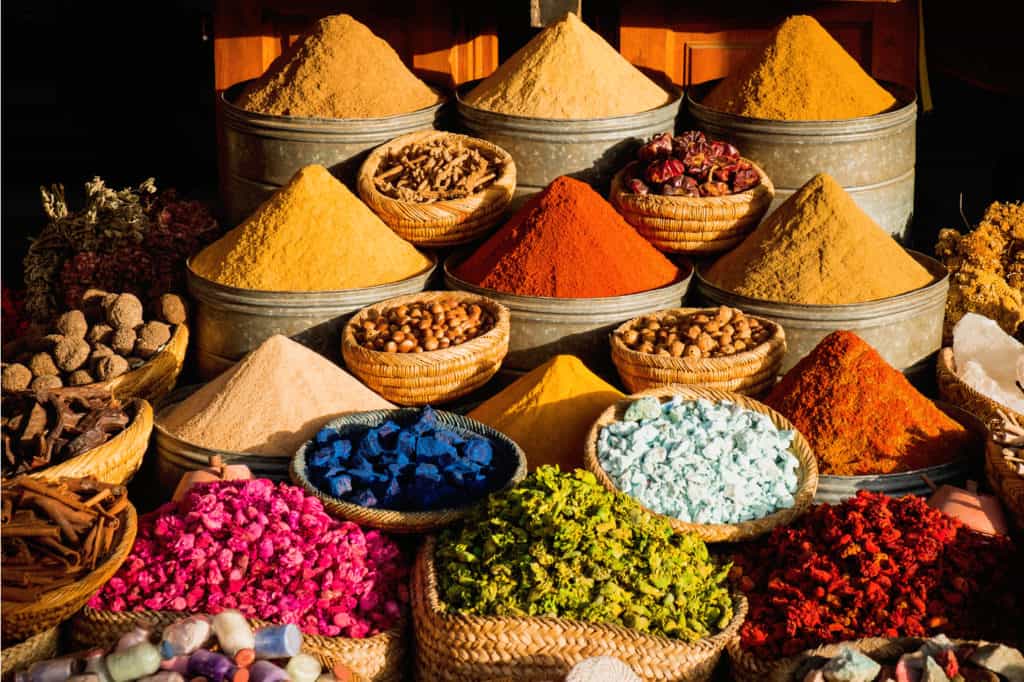
Bargain hunt in the Souks
After getting a taste of the Old City and exploring the main square at Djemaa El Fna, it’s time to dive head first into the souks. Offering the best insight into local and historic culture, the souks are a series of covered markets spread throughout the narrow streets.
The main section to pursue your next bargain is within the flurry of lanes in Place Ben Youssef and Place Rahba Kedima. The most famous of these lanes is Souk Semmarine. Where other souks may specialize in a single product, Semmarine is a conglomerate of enticing options. Surrounded by mesmerizing textiles and the smell of spices pouring out of local establishments, shop for leather goods, silverware, rugs and your next cherished memento. Just like at Djemaa El Fna, don’t be afraid to haggle.
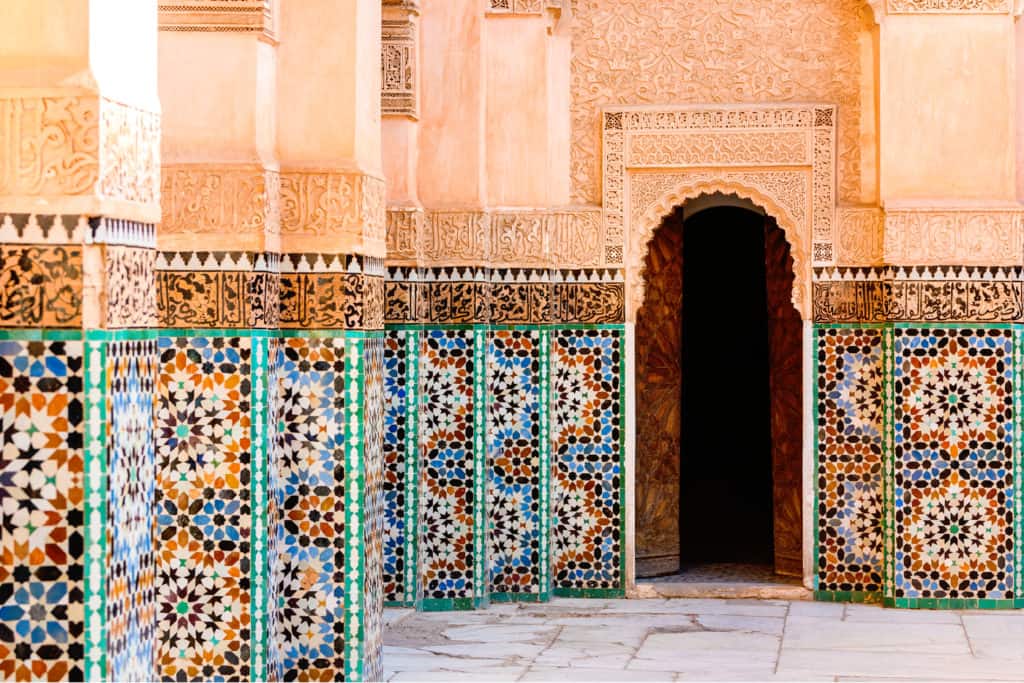
Explore the Medersa Ben Youssef
Ruling Morocco for over a century, the Sadi Dynasty brought exceptional architecture and history to Marrakech. One of the best preserved examples of this is Medersa Ben Youssef. Brilliantly decorated, the theological college, next to the Ali Ben Youssef Mosque, used to be the chief hub in Morocco of Koranic study.
Once home to almost a thousand students, the medersa comprises a series of rooms situated among several ornate courtyards. Each courtyard combines both amazing stonework and vibrant tiling. However, the chief attraction is the central courtyard, the biggest and most diverse. Featuring traditional tiling and exceptional wood-crafted detailing featuring Arabic script. Arrive in the early morning to see the sun soak the courtyard for the first time each day. The color contrasts elevate the 16th century building to being one of the spectacular in Marrakech.
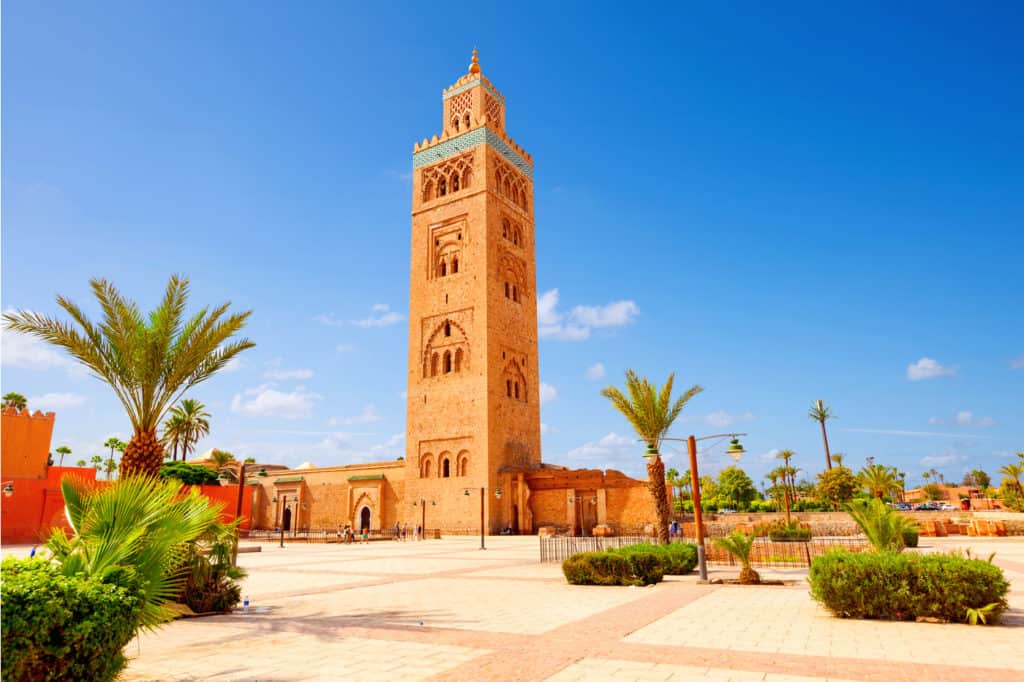
Visit the Koutoubia Mosque
Another must-see on your adventures around the iconic medina is the Koutoubia Mosque. In the southwest corner of the “old town”, just across from Djemaa El Fna, the rose-colored walls are an instantly recognizable sight. As you walk closer, you will begin to admire the sheer size of the 253ft (77) tower that completes this amazing 12th century structure.
As you explore the outside of the Moorish mosque in earnest, its beauty only grows as you come to appreciate the enormous archways and complex tile work rarely found in the modern world. Such is the Koutoubia Mosque’s presence that it has been the inspiration for several other such religious buildings in Rabat, Morocco and Seville, Spain.
For visitors hoping to see inside the Mosque, only those of Muslim faith can enter.

Go on a Desert Safari
The medina is intoxicating, a center of culture and traveling excitement, so we’d forgive you if you wanted to spend your entire time here. However, beyond the Old City walls is a natural world just as captivating. Morocco’s desert scenery is within reach from Marrakech with a variety of half-day, full-day and overnight adventures on offer.
Whether it’s your dream to explore on camelback, hike on two feet or journey beyond the city in an all-terrain vehicle, Marrakech has you covered. Some of the top destinations beyond the city include the Ourika Valley and Ouzoud Falls. For these adventures, it’s always best to travel small, with knowledgeable guides showing off the amazing landscapes and leading you to the best local (and off-the-beaten-path) restaurants.
On this guided desert safari, venturing out on camelback into the Sahara Desert with a night in a Bedouin camp.
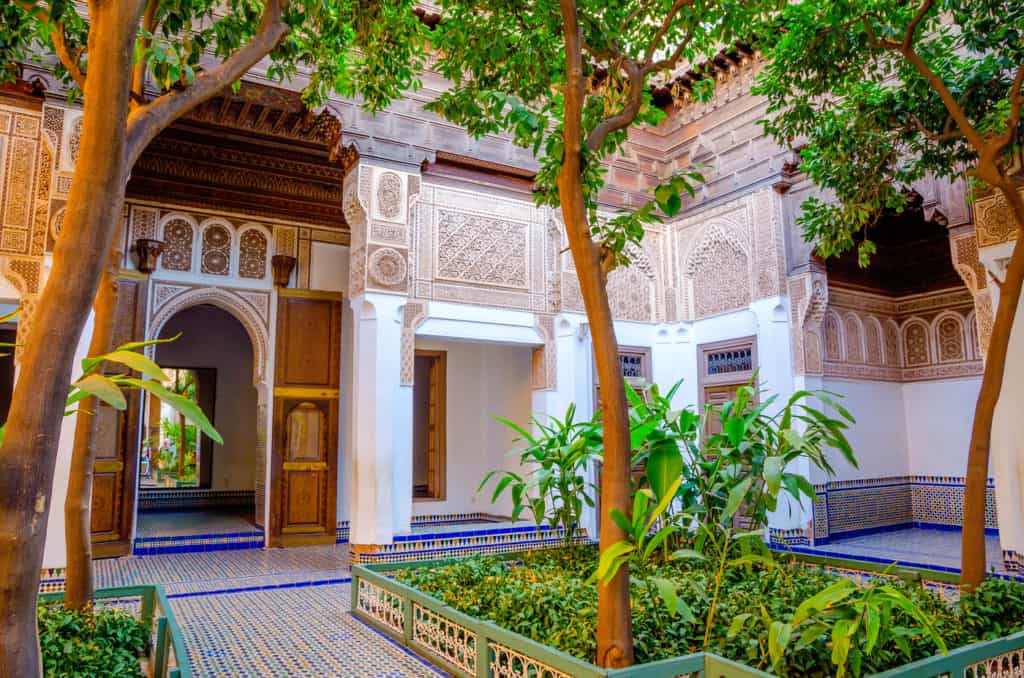
See Bahia Palace
Under the clear, blue Moroccan sky the colors of Bahia Palace shine. Built in the late 1800s to be the home of Grand Vizier Bou Ahmed, the palace is an extravagant example of life among the elite in Marrakech. The ornate tiles flanked by woodwork covered in bright blues, oranges, greens and yellows provide the best in local artistry.
Despite being ransacked just after the turn of the 20th century, members of the Moroccan royal family continue to stay within the palace. Lucky for us mere mortals, much of Bahia Palace is open to the public, including the spacious marble courtyard. Here you’ll find some of the palace’s best designs. Wander by fountains, orange trees and stain glass windows before finishing in the main courtyard. Travelers should arrive early to avoid the rush of crowds around midday.
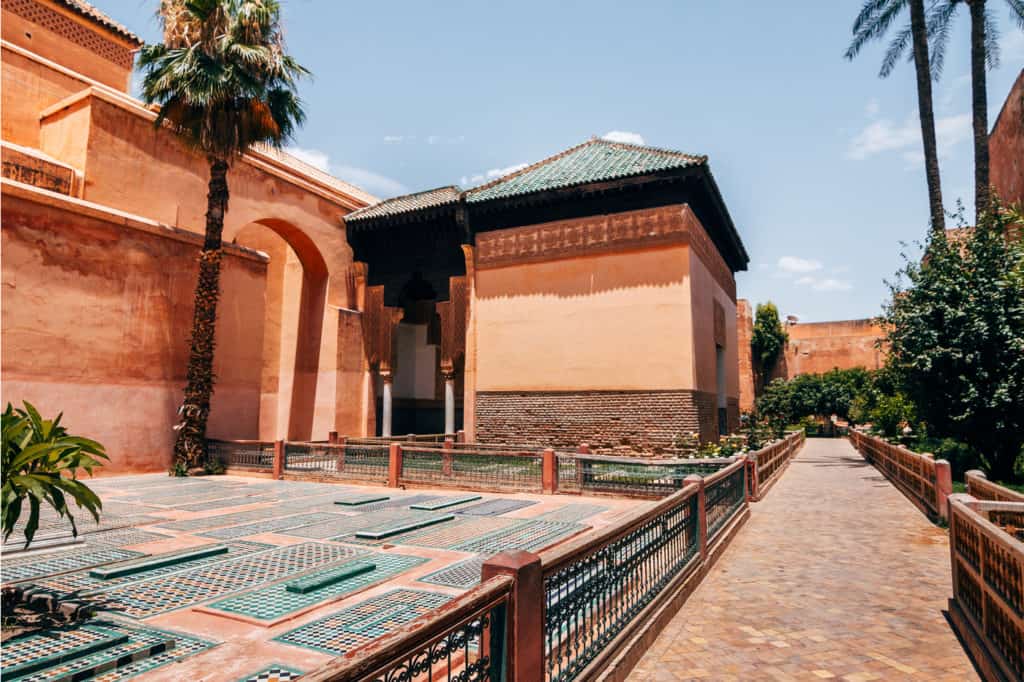
Witness the Saadian Tombs
In the 18th century, when Sultan Moulay Ismail plundered much of Marrakech, he missed the tombs. The Saadian Tombs were hidden in plain sight for centuries until they were rediscovered in 1917. With over 160 tombs, home to some of the most important figures in the Saadian Dynasty, the Saadian Tombs is one of the best-preserved sites from the era.
The tombs first came to use in the 1300s, but it wasn’t for another 300 years that much of the intricate features were added. These include the complex decor from Italian marble headstones, to beautiful mosaics and cedar ceilings.
The tombs have an aura about them and walking through the space is peaceful, even among the rush of tourists.
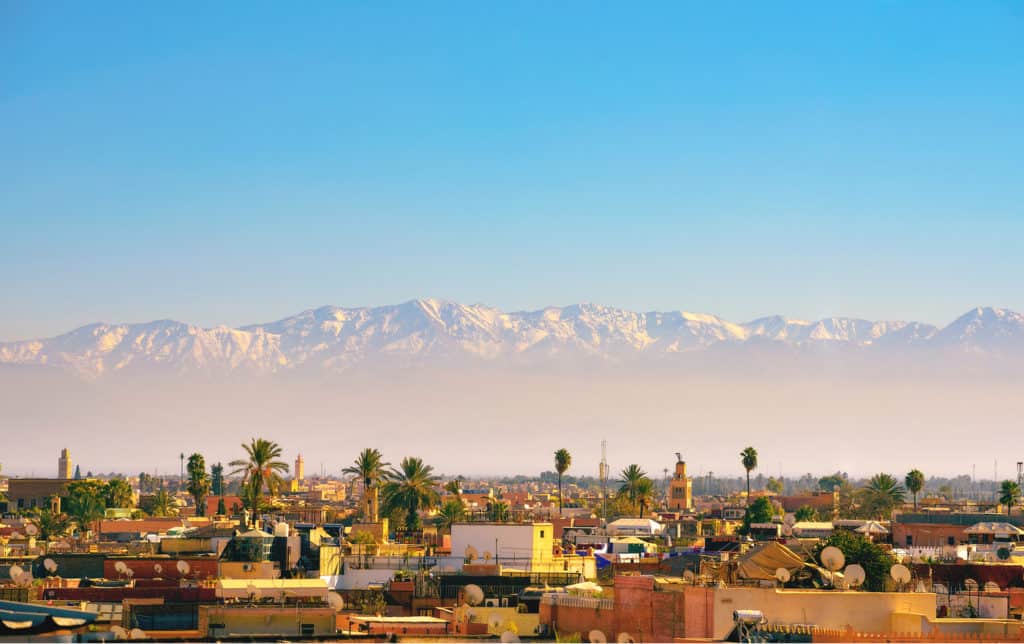
See Marrakech From a Hot-Air Balloon
Even after exploring the desert from the ground, nothing can quite prepare you for the array of colors you’ll experience from above. Devoid of all humidity, the crisp air provides the perfect canvass for an entrancing desert painting. Head up into the sky on your very own hot-air balloon to capture panoramic views of Marrakech, the Sahara Desert and the looming Atlas Mountains.
The early morning start allows you to rise with the sun as the shadows change rapidly below. The oranges and reds become brighter and the spots of green shrubbery stand in stark contrast. Over your hour in the sky, enjoy the tranquility with plenty of time to capture memorable photos before touching back down.
Beginning with a hotel pickup and ending with tea and fresh bread with a local Berber family, this is the hot-air balloon experience you’ve been waiting for.
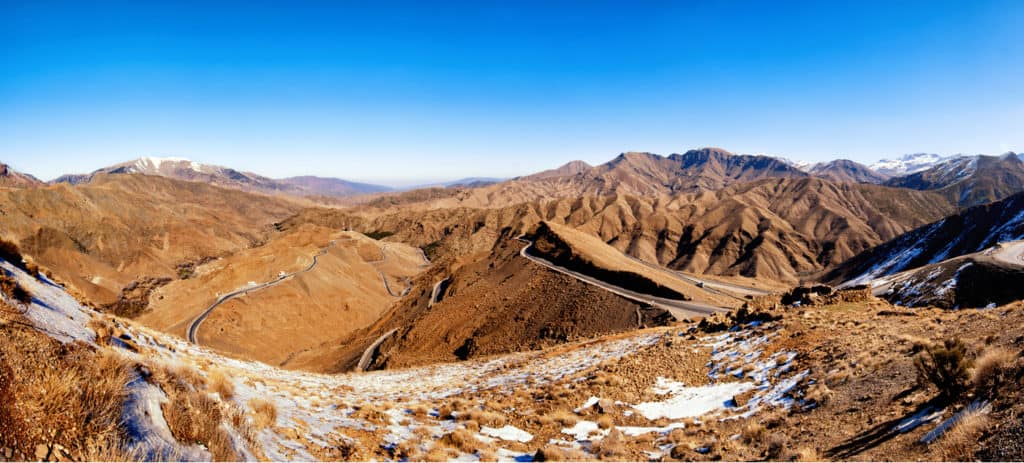
Trek through the Atlas Mountains
One of the best trips you can take out of Marrakech is to the Atlas Mountains. The mountains are not a continuous range, but a series of them separated by wide plateaus. Starting along the Mediterranean and meandering to the Atlantic Ocean, the Atlas Mountains cross through a variety of ecosystems and geography. All of this will be on full display as you make the journey into the amazing landscapes.
The length of your experience in the Atlas Mountains can range from a day to weeks, depending on your goals and budget. But no time in the mountains would be complete without exploring some of the traditional Berber villages, the gorgeous valleys and at least one summit view.
On this single day trip to the Atlas Mountains, follow your local guide for impeccable views in the high alpine combined with cultural experiences in the village of Imlil.
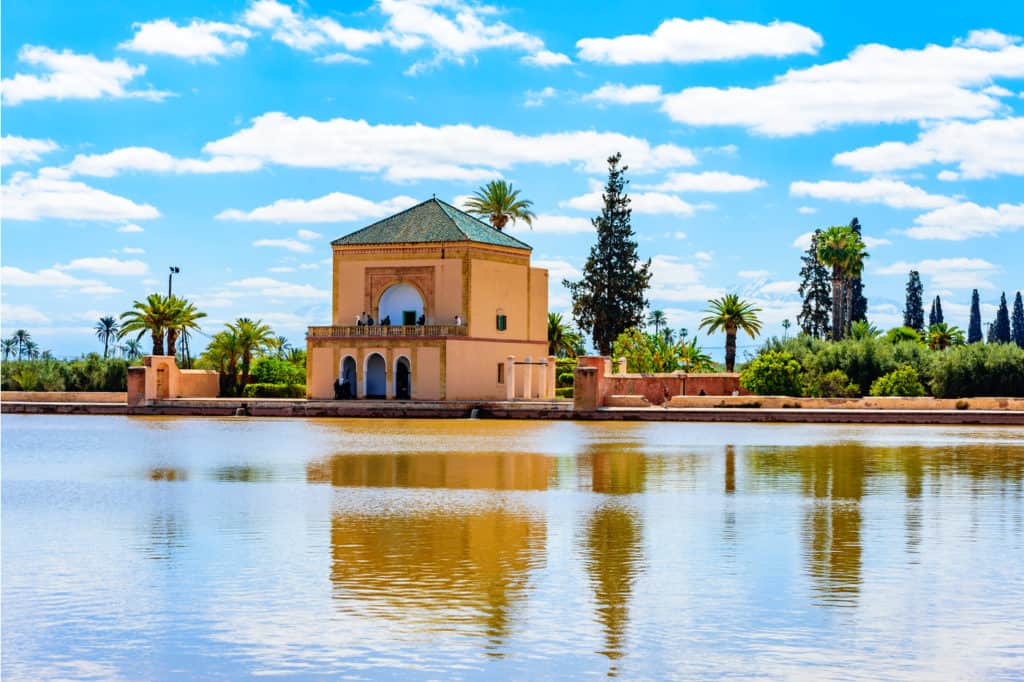
Roam the Menara Gardens
For beauty a little closer to home, visit the Menara Gardens. Under the rule of the Almohad Caliphate, these gardens first appeared in the 12th century. The gardens were later named after the beautiful pavilion building that stands tall above the landscape.
In front of the snow-capped Atlas Mountains, roam the gardens at any time of day. Enjoy some respite from the Moroccan sun while being surrounded by picturesque and manicured gardens. Followi the many laneways that splice the Menara Gardens and spot rows of olive trees before reaching the central lake with views of the pavillion.
The gardens are a popular hangout spot for locals and the large promenade that connects to the park is always flush with vendors selling anything from sweet treats to souvenirs.
Tiskiwin Museum
Created by Bert Flint, a Dutch anthropologist, the Tiskiwin Museum puts on display an encompassing collection of Berber artifacts. The prominent collection has since become a part of the city’s Cadi Ayyad University as a way to preserve the country’s history that dates well beyond Arab occupation.
The museum takes you on a journey along historic routes that connected Marrakech to Timbuktu. As you venture on this journey, you’ll experience further insight into tradition life from festivals to trade and commerce.
Some of the impressive artifacts include period furniture, robes, jewelry and baskets plus delicate stone and wood carvings. Alongside each exhibit is a thorough description to help complete the picture.
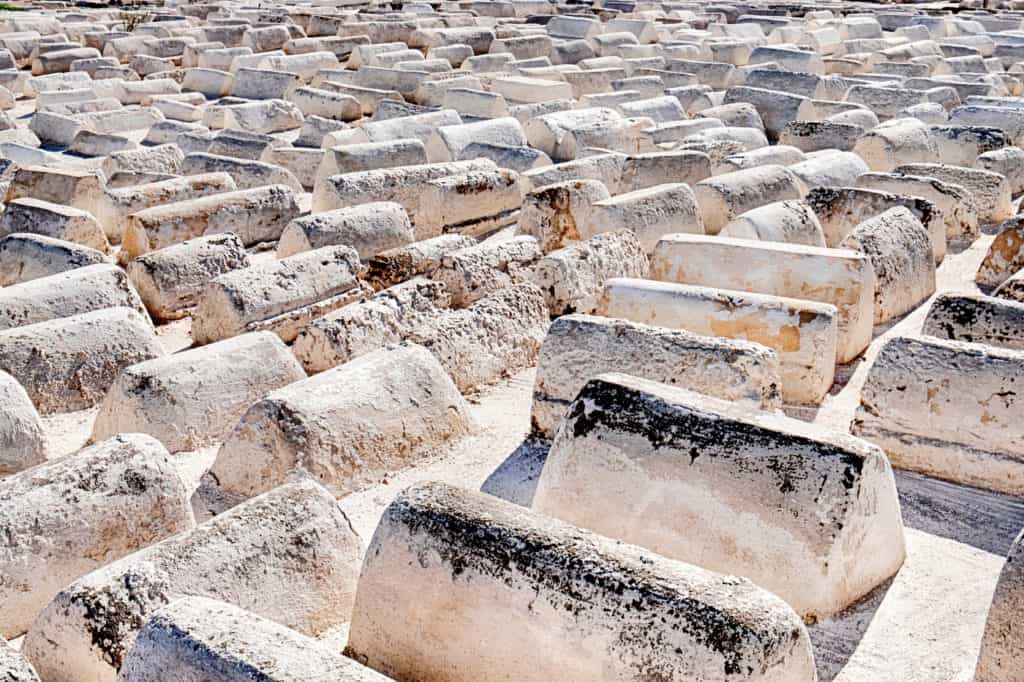
Explore Mellah
Marrakech’s Jewish Quarter features even narrower streets that the famous medina. This was a forced necessity rather than a choice thanks to the rule of the French Protectorate, which began in 1912. Under their rule, the Jewish community couldn’t live outside the quarter, so they grew from within, using every inch of the district at their disposal.
Mellah was once an atmospheric neighborhood that rivaled the medina through the ages. The district was a hub of trade, banks and jewellers until the strain and persecution of the Protectorate became too much and the community size dwindled. Today, the original street names have been restored and visitors can experience a glimpse of what life was like before 1912. With the reemergence of markets and cafes, Mellah is also a popular alternative for those who wish to escape the hectic action found at the famous souks.
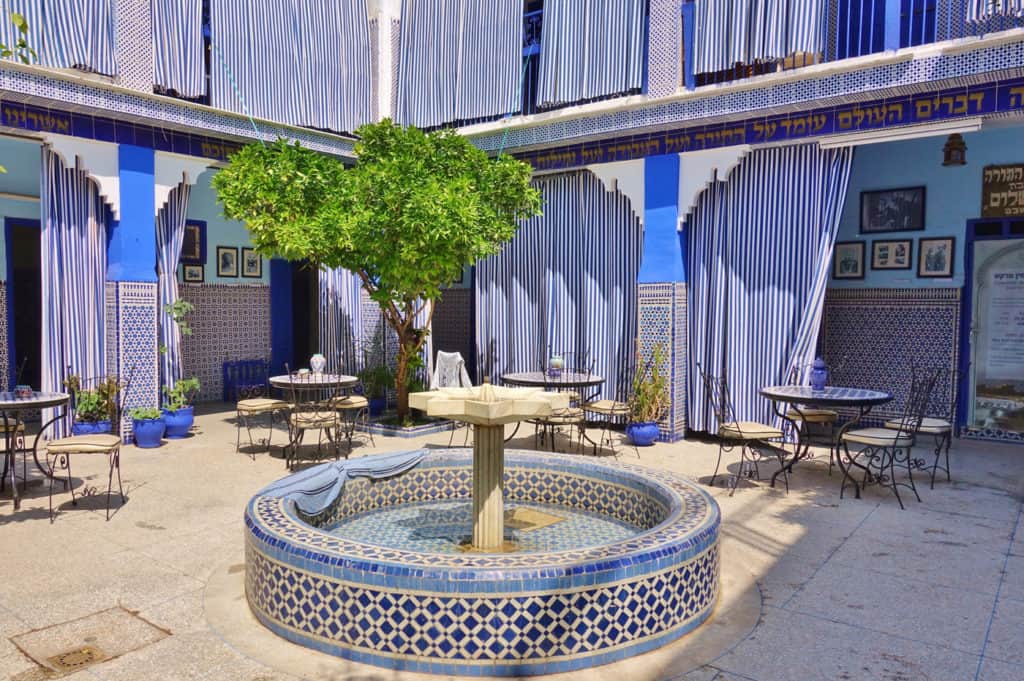
Slat Al Azama Synagogue
One of the top sites in Mellah is the beautiful Slat Al Azama Synagogue. Built after the Jewish community was expelled from Spain in the 15th century, the synagogue features stunning hand-glazed traditional tiles. The varied colors of blue are in direct contrast to the array of warm orange, red and brown colors all around Marrakech.
The beautiful courtyard, once a religious school for 400 students, is a wonderful place to sit and take in the intricate designs. The Slat Al Azama Synagogue also has a small exhibition space complete with historic documents and photographs that explore the history of the synagogue from the 16th century to the modern day. Where it remains one of just two local places of worship for the Jewish community.
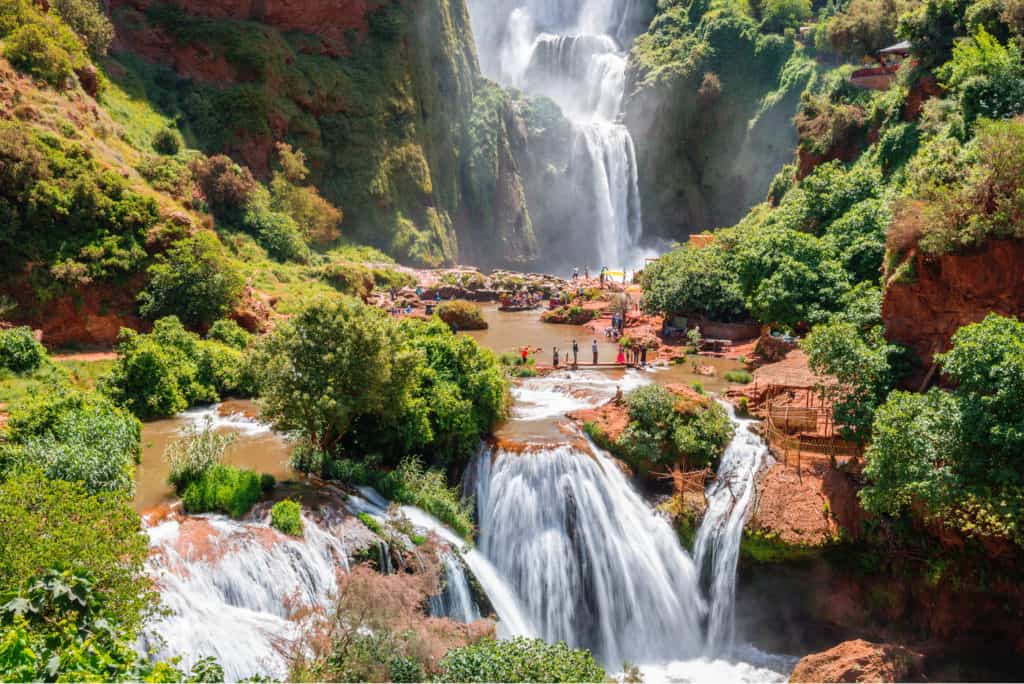
See the Ouzoud Waterfalls
Your adventures out into the desert and to the Atlas Mountains may also lead you to the stunning Ouzoud Waterfalls. But if they don’t, then you must add this amazing natural landmark to your Marrakech itinerary. Nirvana personified, the Ouzoud Waterfalls are a series of cascading falls encapsulated by lush green forests and desert rock.
We’d forgive you for thinking you’ve arrived in Heaven. The array of colors is enough to send you to another world. When the roaring El Abid River reaches its first drop, the water tumbles dramatically into the abyss before forming a natural pool. From there, it floats subtly along until powerfully surging off the next cliff. Both falls combine to drop 360ft (110m) in elevation. Footpaths and bridges will guide you between both falls, allowing you to stand beneath the first behemoth with excellent views of the second waterfall.
On this guided tour experience, experience the Ouzoud Waterfalls up close on a hike and boat ride.
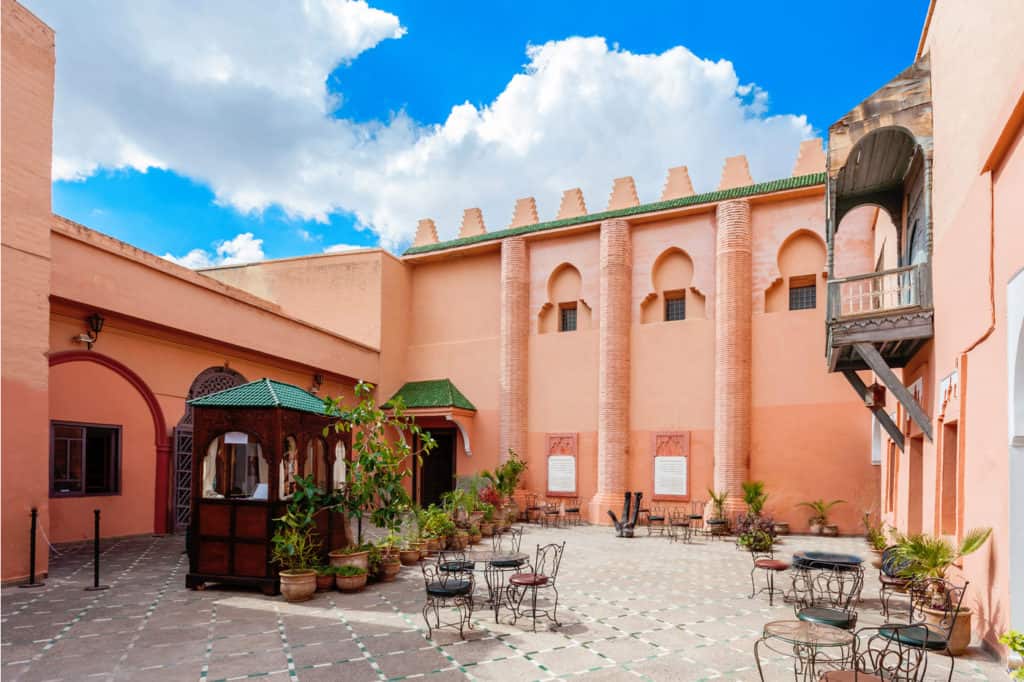
Visit the Museum of Marrakech
As a palace built for the defense minister Mahdi Menhbi in the 19th century, the Museum of Marrakech is more renowned for its architecture that the museum itself. If you can’t get enough of Moroccan designs and decor, then you should pay a visit to the old Dar Menehbi Palace.
A prominent example of Andalusian architecture, the palace fell into disrepair during the 20th century until it was restored and turned into the museum we see today. As for the museum’s exhibits, you can discover various collections of historic weapons, modern art and even some pottery from the palace’s first iteration.
However, the main attraction continues to be the striking courtyard. Large even by Marrakech’s standards, the gorgeous courtyard features a multi-level chandelier that hovers ominously over the space.
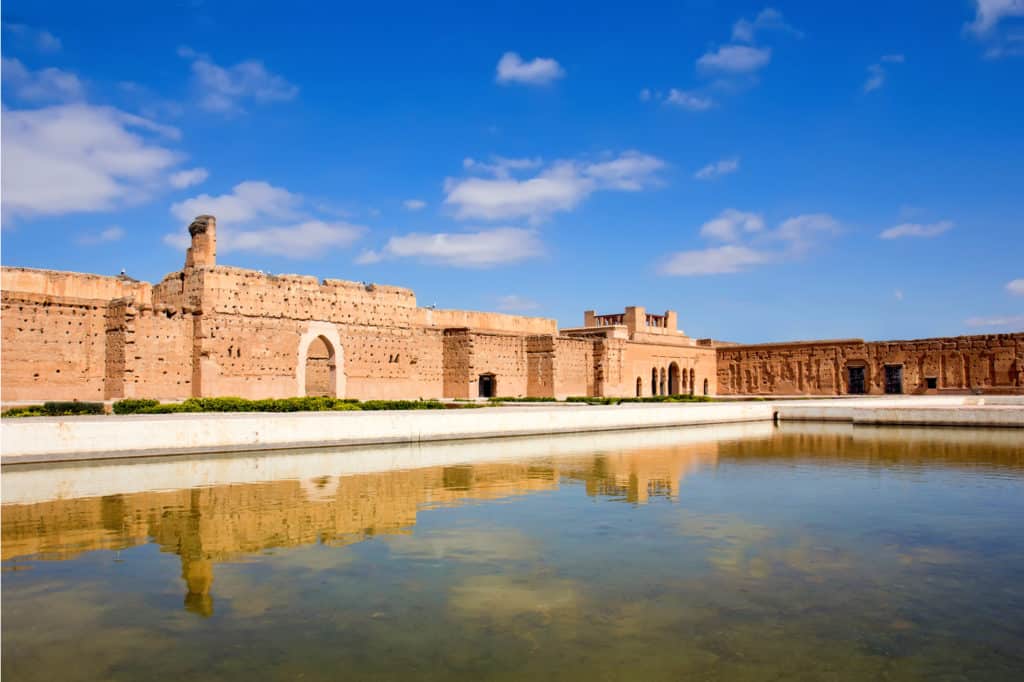
Badi Palace
Once home to royals and the city’s elite, the Badi Palace is now a skeleton of its former self. But when among the ruins, it’s easy to picture the just how splendid the palace would have been in its heyday, during the 16th century.
Roam through the four sunken gardens, passing reflecting pools that have long been empty. Where much of Marrakech’s historic buildings offer clear insight, Badi Palace is a sobering yet beautiful reminder that not everything lasts forever. As you continue to meander through the old grounds, enter the palace itself to see dozens of old chandeliers, frozen in time, along with Venetian sconces, and the hundreds of thousands of tiles.
From the walls of Badi Palace, visitors will be afforded excellent views of the sprawling medina along with the neighborhood of Mellah.
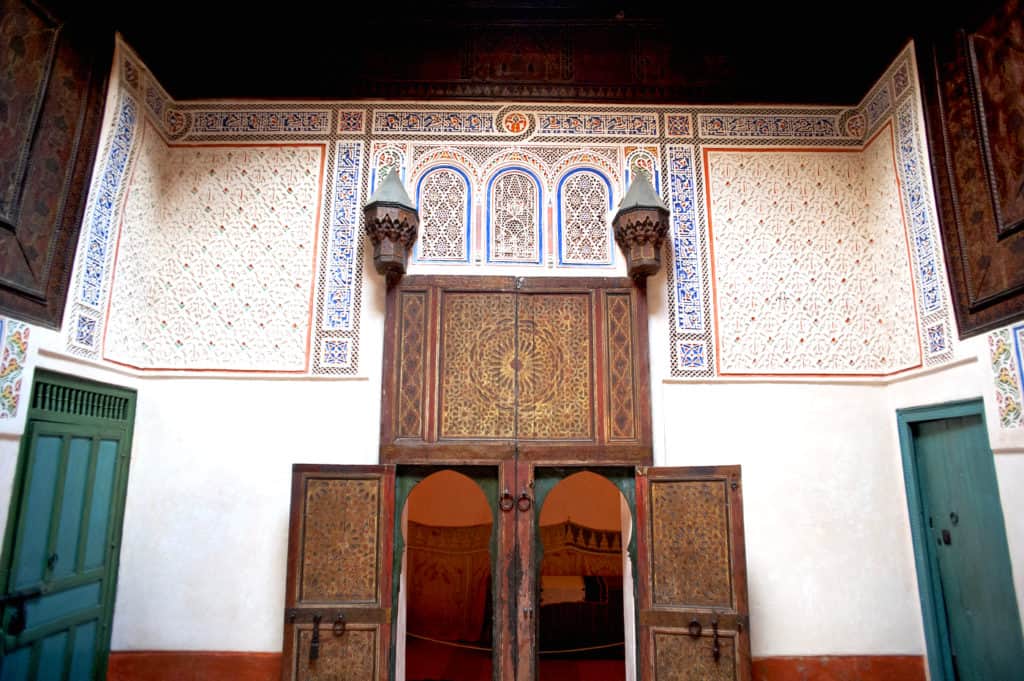
Check out the Museum of Photography
Documenting local life, culture and the landscapes of Morocco from 1870 to 1950, the Museum of Photography offers an immense visual take of a fascinating period in the nation’s history.
Within the Old City, alongside Medersa Bed Youssef, discover over 10,000 original pictures from a number of prominent photographers. Among the exhibits are postcards and documentaries complemented by glass negatives. You’ll also find an extensive library with works from the same period.
Away from the noise and bustle of the hawkers below, the Museum of Photography gives you the chance to step back and admire without a mad rush. Once you’ve seen it all, wander to the rooftop terrace for some local coffee at the highest cafe in the medina.
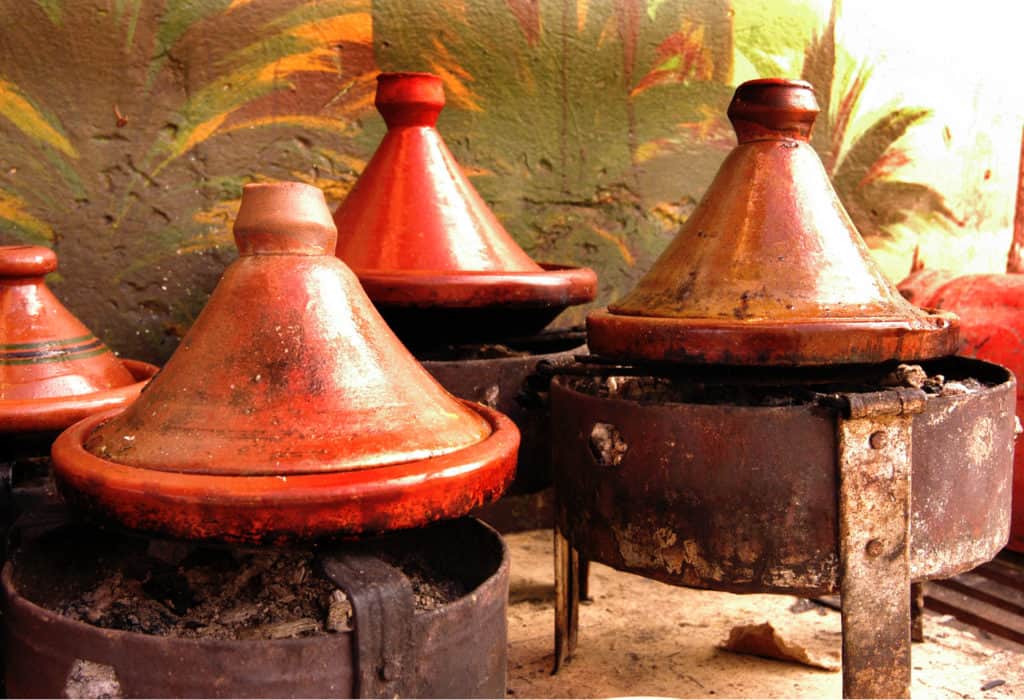
Try a Cooking Class
Whether you’re wandering through the medina and souks or have ventured to the surrounding districts, you would have gotten a taste of local cuisine. Famous for its couscous, bastilla and tagine, Morrocco is home to one of the best cuisines in the world.
If one of the top ways to get to know a city is through its food, then the best way to bring Marrakech home with you is by learning how to make their traditional eats. The easiest way to do this is by signing up for a cooking class where you’ll learn not just how to make the classics, but also deserts and mint tea.
With many options for couples, families and groups, there’s bound to be a class that works best for you. Under the guidance of your head chef, this cooking class will guide you through making a traditional four course meal.
Take the Kids to Oasiria Marrakech
For all its beauty and culture, Marrakech is still a hectic place and at some point you’ll be searching for a timeout. One of the best ways to escape the hustle and bustle of the medina and have some fun is at Oasiria. Across 25 acres of beautiful gardens, are eight pools to swim in and over 15 slides for those seeking some thrill.
How you approach your time here is completely up to you. With sprawling green lawns under swaying palm trees and rows of olive orchards, Oasiria is an oasis as the name suggests. Kick back and let the kids run off.
But if you want to join in on the fun, you can ride down the Kamikaze and the Cobra before jumping in the wave pool. Finish with a journey down the park’s lazy river for a lovely change of pace.
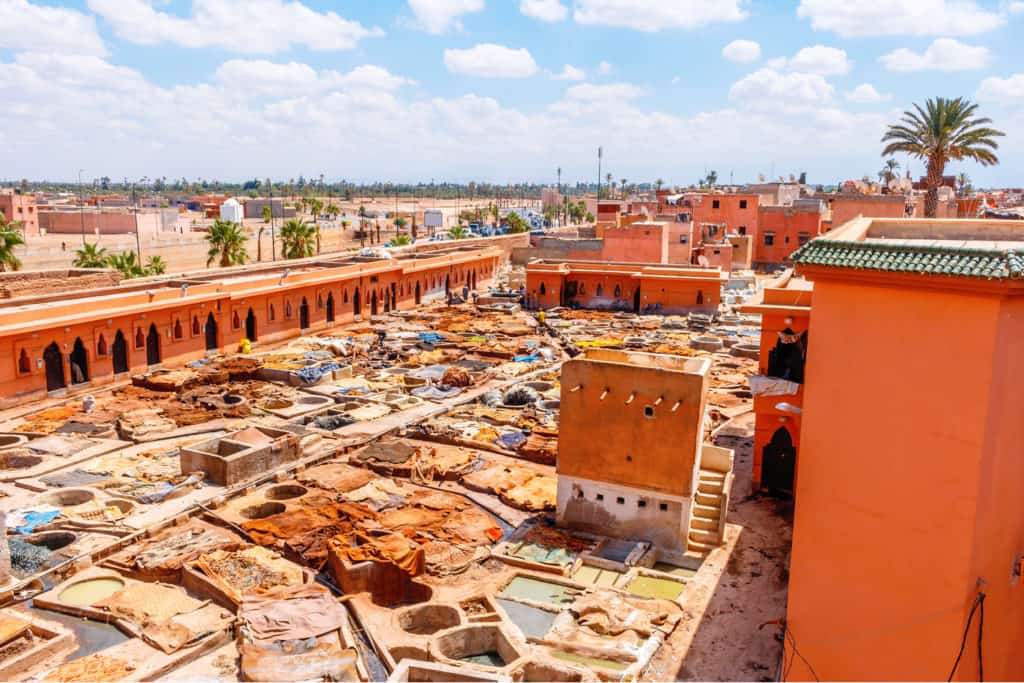
Experience the Tanneries
Although smaller than the renowned tanneries in Fes, the local tanneries of Marrakech are just a worthwhile visiting. For every leather item that you’ve discovered in the souks, the vast majority, from bags to shoes, were once right here.
With the leather spread out under the sun, each piece of hide follows the same traditional process. Beginning with drying, the hide is then cured before the tanning and later, the dyeing, begins. Turning hide into leather makes it more durable and also allows the tanners to change the color, creating a myriad of possibilities.
In the morning hours you can watch the slow process take place with excellent views of both the tanneries, the leather workshops and the surrounding city.
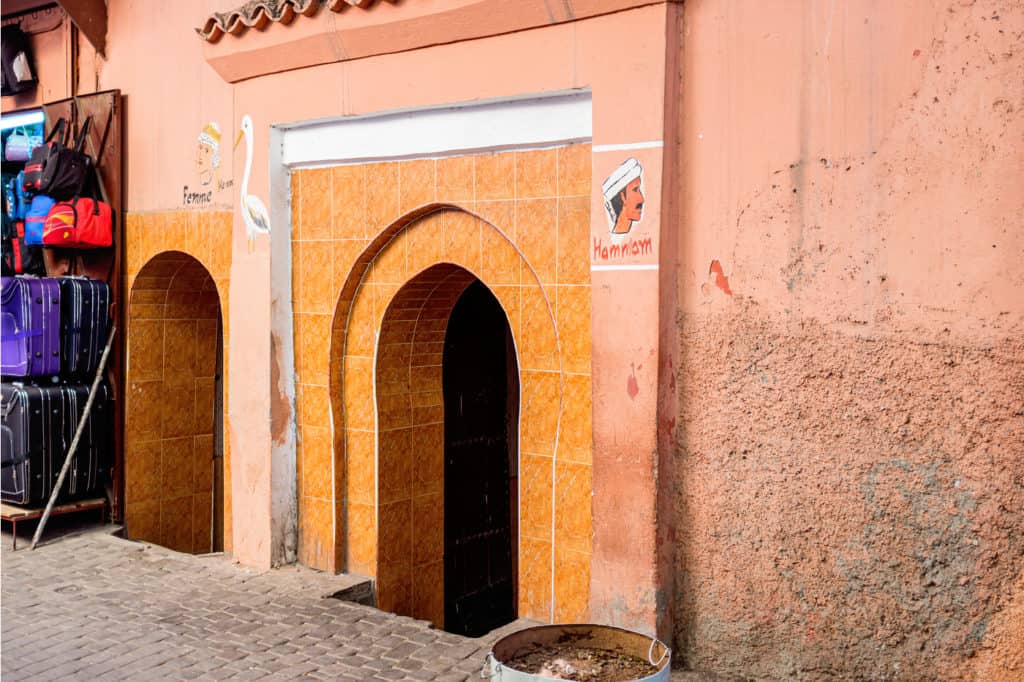
Enjoy a Communal Bath at a Hammam
When the legs inevitably grow tired after exploring narrow streets and the Atlas Mountains, then use the traditional cure for your woes. Hammams are a traditional communal bath, so don’t expect your usual spa treatment. Often under an ornate dome, the bath halls are a place to relax, cleanse and exfoliate with steam rising from the water.
As it is a communal experience, you’ll have to be comfortable around strangers who would have been doing this for years. There are several renowned hammams, from the Royal Mansour to Heritage Spa and Les Bains De Marrakech. Within the medina, however, are several smaller local hammams where few travelers think to go. Come here for a traditional experience.
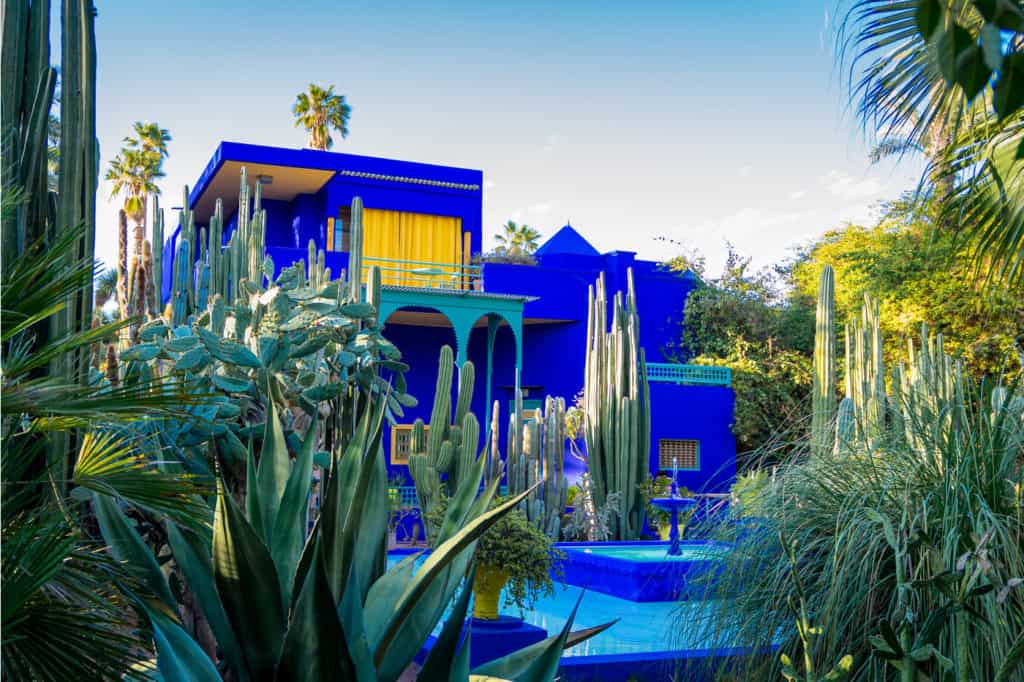
Walk through Majorelle Gardens
With your body refreshed and ready to go, it’s time to explore the tropical and desert landscapes of the Majorelle Gardens. With towering palms among the rows of cacti, the gardens are a visual masterpiece.
It should come as no surprise then that it was all created by the French painter Jacques Majorelle. After arriving in Marrakech to deal with lingering health problems, Majorelle become a prominent local painter. His most renowned work, however, is the gardens and his former home.
Colored a thick blue (now known as Majorelle blue), his home stands out among the lush greens. It’s here that the artist went to work in his studio, which has since been transformed into a museum of Berber art.
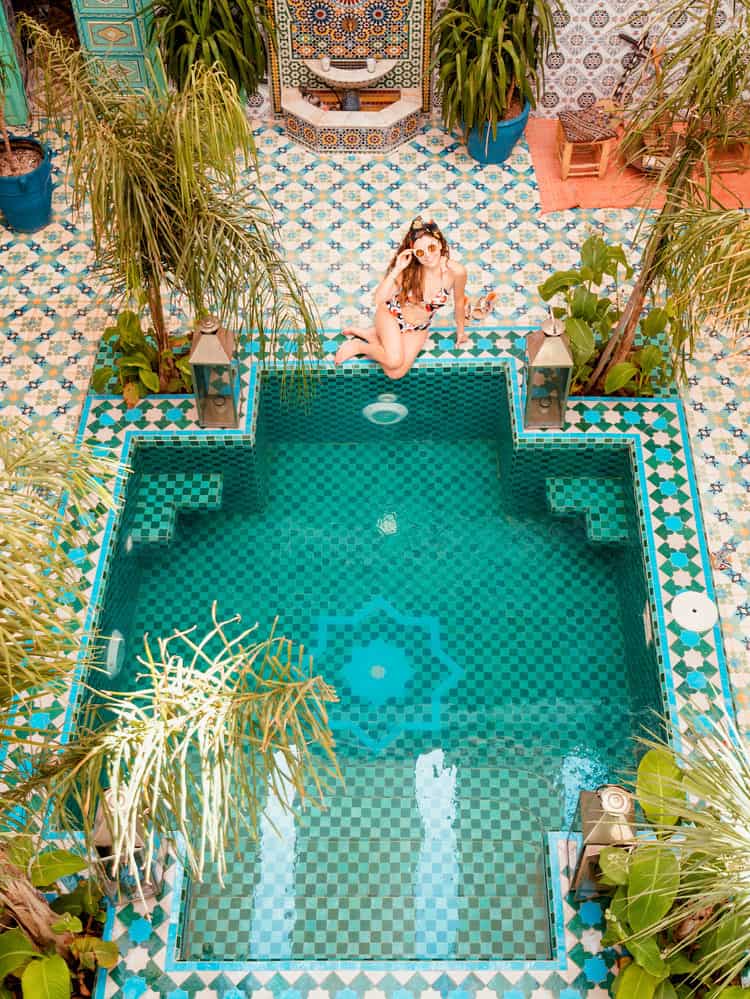
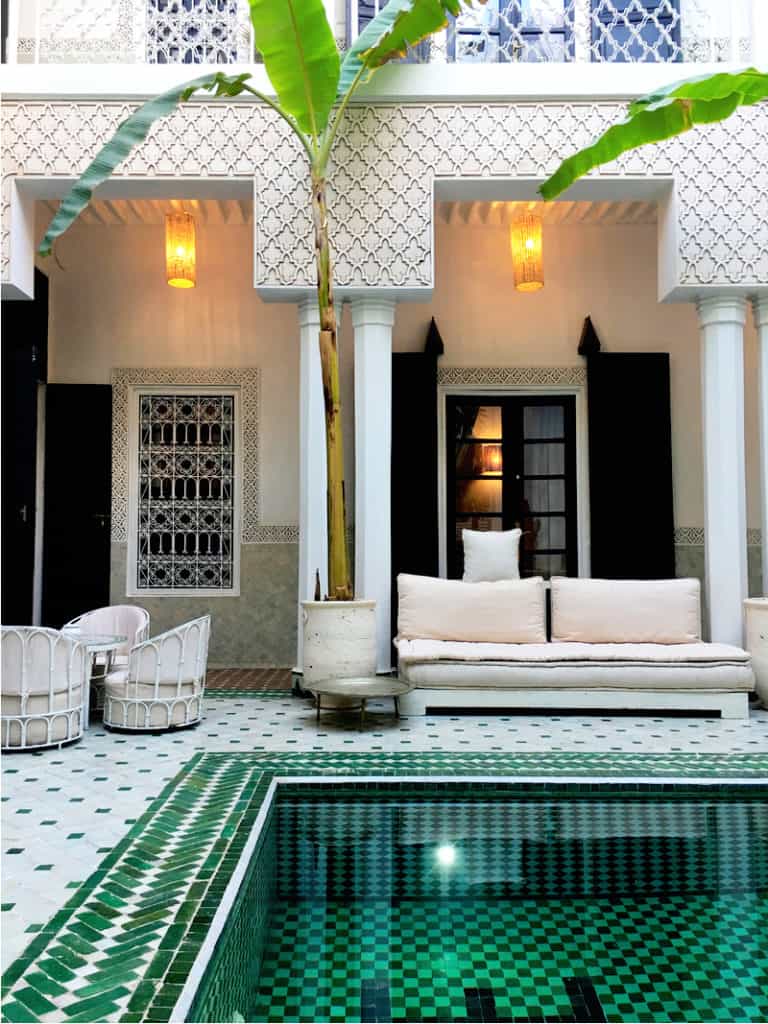
Medina Riad Hotels
As you plan your Marrakech adventure, you may find yourself stuck on accommodation. If that’s the case, then look no further than the traditional riad hotels speckled around the medina. The riad, a local guesthouse, will provide you will a firsthand experience of Morrocan architecture.
Many riads feature a small, central swimming pool and the perfect place for a bath after yet another exciting day. Eat in the vibrant courtyard surrounded by dreamy tiles before falling asleep in your man-made oasis.
Not only does the aesthetic promise to be on point, but it will provide a welcome point of difference to the often-stale hotel experience.
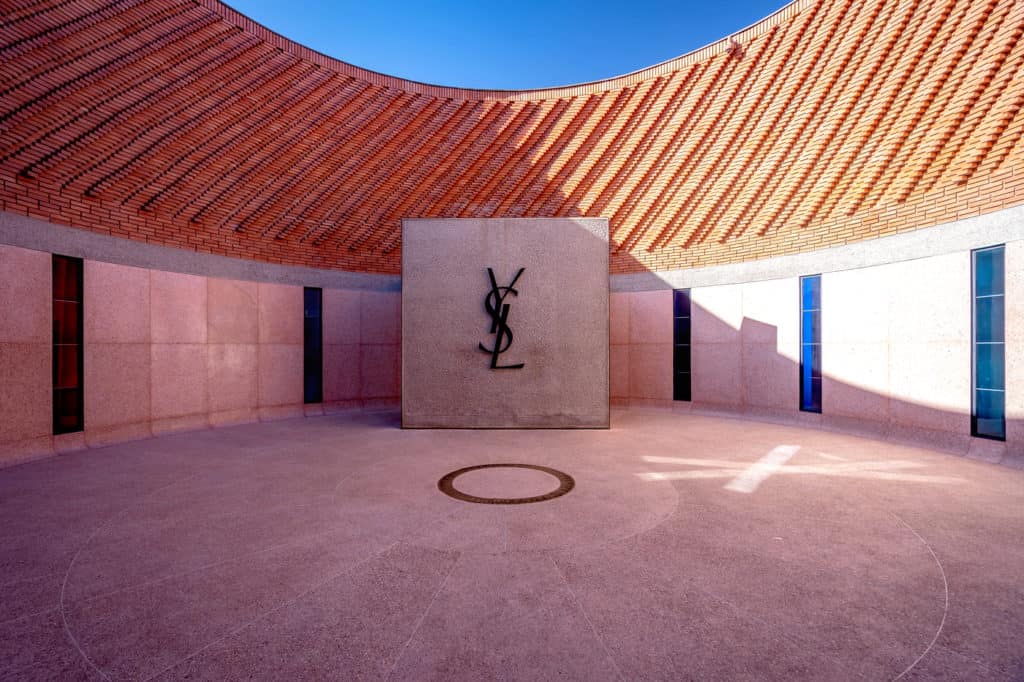
Visit the Yves Saint Laurent Museum
When Jacques Majorelle passed in 1962, Yves Saint Laurent bought the property. Yves’ ashes were later scattered around the gardens in 2008. Alongside the park, you’ll find the Yves Saint Laurent Museum, dedicated to the life and times of the famous designer and one of the top attractions in Marrakech.
Yves Saint Laurent always had a soft spot for Morocco, especially Marrakech. Nine years after his passing, the museum opened and provides one of the biggest collection of his work in the world. Showcasing his four-decade career, explore iconic designs that everyone can appreciate.
The striking brown building contrasts with the deep blue studio at Majorelle Gardens but comes with an on-site cafe, auditorium and bookshop.
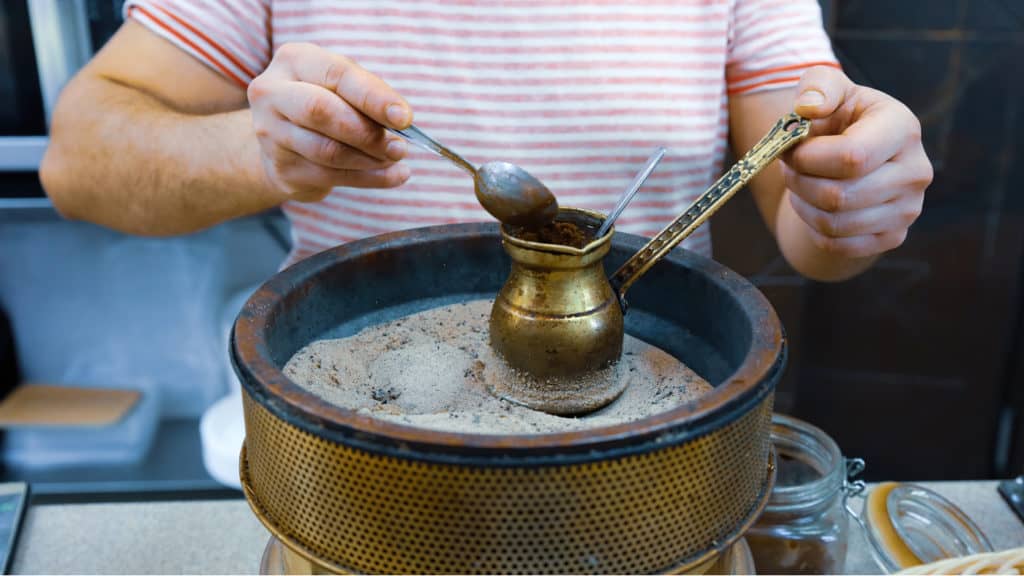
Try the Local Coffee
In Marrakech, it pays to wake up early. Not just to experience some of the best sights without the late-rising crowd, but also to see the medina before even the locals have gotten out of bed. Before the street stalls and markets welcome a flurry of activity and the action reaches its zenith, find a local cafe and enjoy the scenery.
As you try some Moroccan spiced coffee, you’ll realize how much more you can see without the endless heads and shoulders blocking your view. Over time, you can witness the day slow begin to develop.
If you’re searching for the best spot to grab a coffee in Marrakech, then head to Bacha Coffee House. Alongside the ornate Musee des Confluences, the coffee shop serves over 40 different brews.

Day trip to Ait Ben Haddou
Within the mid-range of the Atlas Mountains is Ait Benhaddou, where the plethora of sandstone buildings mix in perfectly with the desert landscape. Now a UNESCO World Heritage site, the town is exceptionally well-preserved, offering you a picture perfect insight into an ancient culture.
After arriving, you may feel a sense of déjà vu. If you’ve seen either of the Gladiator and the Mummy films or Game of Thrones, then you’ve seen Ait Ben Haddou before. More than just a movie backdrop, the town was an important stop along the caravan route between Marrakech and the Sahara for centuries.
Within the walled community, four families remain. Untouched through the eras, the settlement is still without electricity and the majority of locals have moved across the stream to a new village. This leaves you with an incredible kasbah to explore.
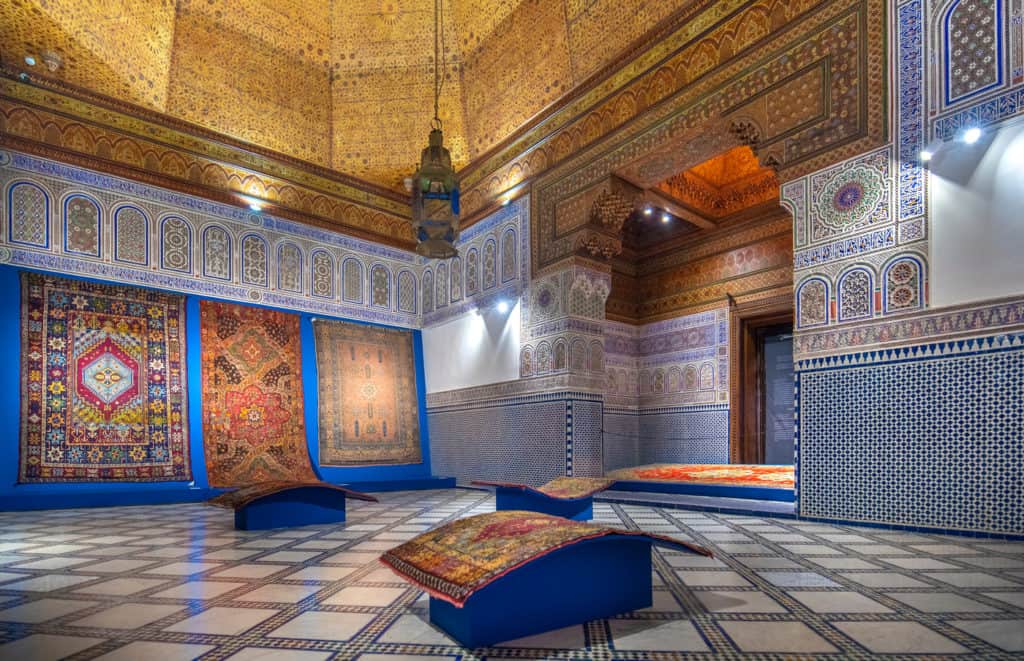
Explore Dar Si Said
The oldest museum in Marrakech, Dar Si Said, or the Museum of Moroccan Arts and Crafts, provides an amazing range of Berber artifacts within a typically gorgeous palace. Exploring the evolution of art and design in Morocco, discover fine silver jewelry, ancient pottery and decorated leather.
Each artifact can be traced to a variety of different regions and eras, from the medina itself to the town of Taroudant and the High Atlas Mountains. As you wander between each exhibit, you can admire the traditional designs and zellige tile work that stacks up against other popular palaces around Marrakech.
Related Articles About Morocco
💰 How Much Does it Cost to Travel in Morocco?
🧕🏼 The Complete Guide to Travelling to Morocco as a Solo Woman (2023)
🐪 An Incredible Experience in the Sahara Desert
💙 Is Chefchaouen the Prettiest City in the World?
🏖 Every Post I’ve Written About Morocco

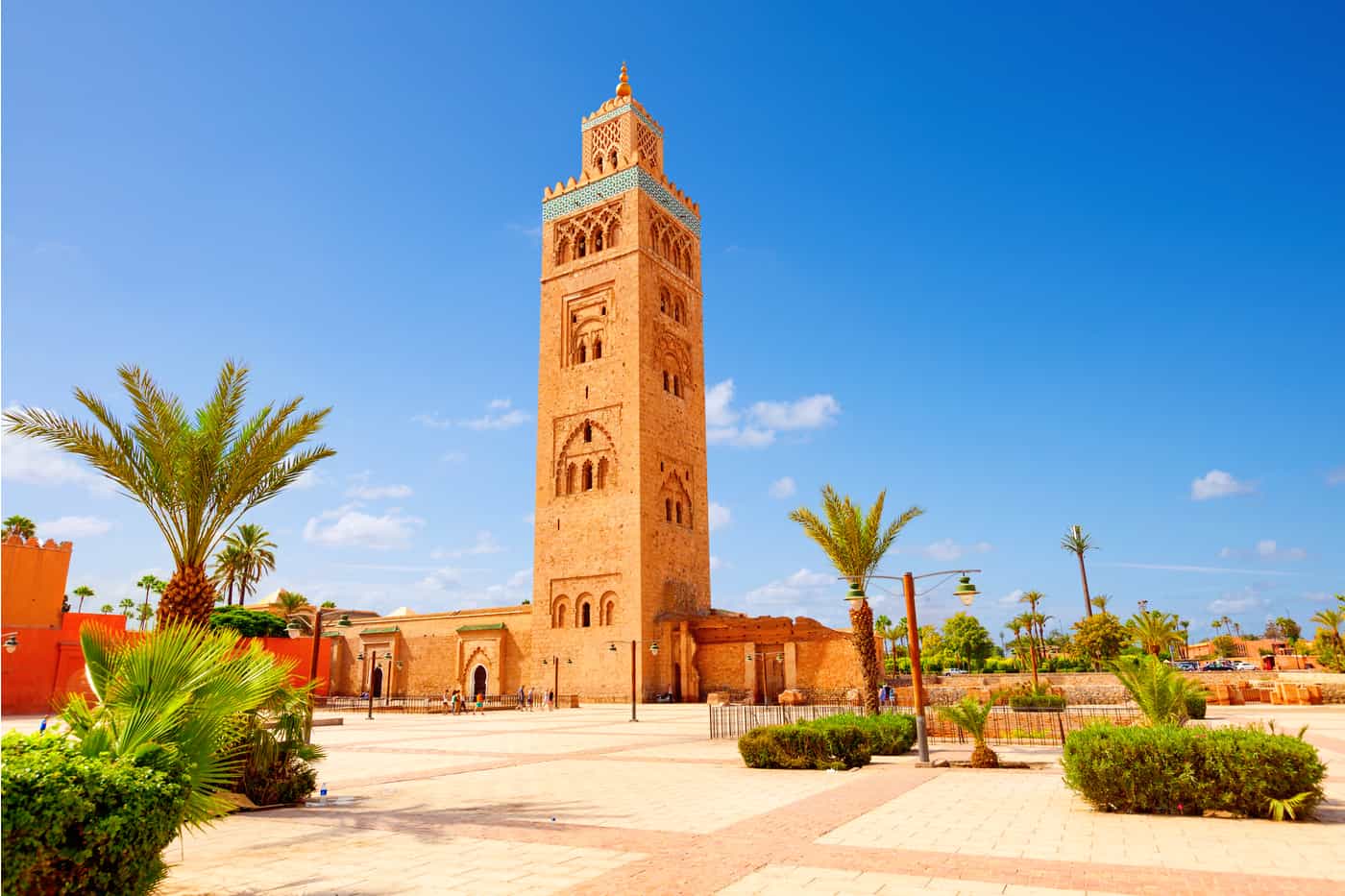



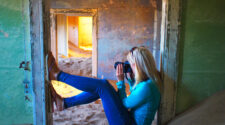


No Comment